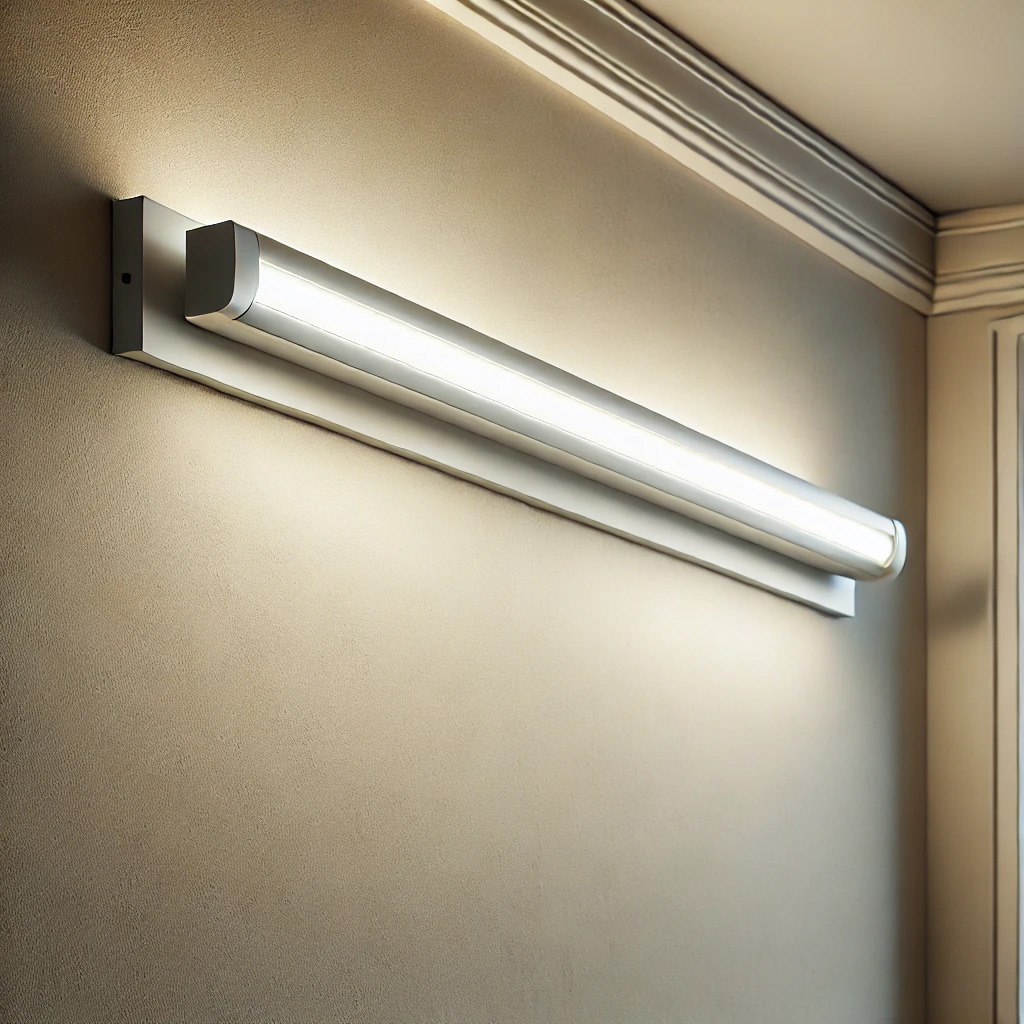LED tube lights are cutting-edge, energy-efficient lighting solutions that use light-emitting diodes (LEDs) to provide illumination. Unlike traditional fluorescent tubes, LED tubes consume less power, last much longer, and deliver superior light quality. They are designed as direct replacements for fluorescent tube lights and are suitable for residential, commercial, and industrial settings.
Each LED tube light contains a series of tiny LED chips enclosed in a robust, often recyclable casing. These chips convert electrical energy into light while minimizing energy loss as heat, resulting in bright, clear illumination with up to 70% energy savings compared to fluorescent lights.
Evolution of Lighting Technology: From Fluorescent to LED
The shift from fluorescent to LED lighting marks a major technological advancement. Fluorescent lights, first popularized in the early 20th century, offered higher efficiency than incandescent bulbs. However, they also had several drawbacks, such as flickering, buzzing, and containing mercury—a hazardous substance.
LED technology emerged as a cleaner, more efficient alternative, offering:
- Flicker-free and noise-free performance
- Lower energy consumption
- Eco-friendliness, with no mercury content
Today, LED tube lights have taken center stage as the future of sustainable and efficient lighting.
Why Switch to LED Tube Lights?
LED tube lights outperform traditional lighting options in several ways:
- Energy Efficiency: Consume up to 80% less electricity than incandescent bulbs and 50% less than fluorescents.
- Longevity: With a lifespan exceeding 50,000 hours, they require far less frequent replacement.
- Light Quality: Provide consistent, flicker-free illumination with adjustable color temperatures.
- Eco-Friendly Design: Contain no hazardous materials like mercury and are easier to recycle.
Switching to LED tube lights ensures brighter, safer, and more economical lighting.
Types of LED Tube Lights
T5, T8, and T12: Understanding the Differences
LED tube lights come in three main sizes—T5, T8, and T12—defined by their diameter:
- T5: Slim and highly efficient, perfect for compact areas.
- T8: The most common size, offering a balance of brightness and efficiency.
- T12: Thicker and less efficient but still suitable for certain retrofit needs.
Your choice depends on the compatibility of your fixture and your lighting requirements. For most applications, T8 tubes are highly recommended.
Best 5 led tube light
Philips LED Tube Light
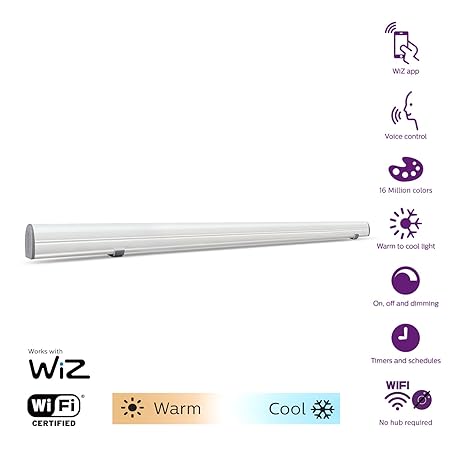
- Features: High brightness, energy-efficient, flicker-free performance.
- Variants: Available in cool white, daylight, and warm white.
- Lifespan: 20,000+ hours.
- Suitable For: Homes, offices, and commercial spaces.
Wipro Garnet LED Batten
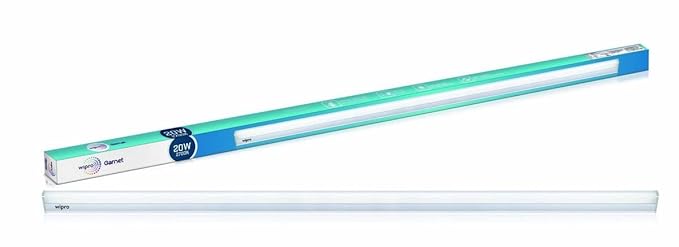
- Features: Sleek design, glare-free lighting, uniform illumination.
- Power Options: Available in 20W and 22W.
- Lifespan: 25,000+ hours.
- Suitable For: Modern interiors and workspace lighting.
Syska LED Tube Light
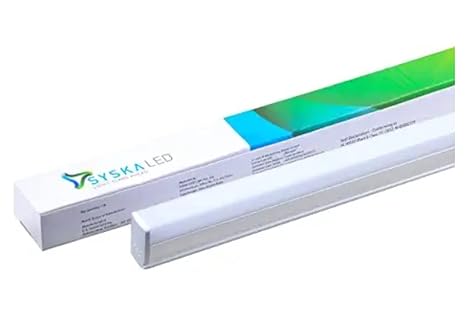
- Features: Energy-efficient, lightweight, low heating.
- Design: Slim and aesthetic build.
- Lifespan: 30,000+ hours.
- Suitable For: Residential and commercial use.
Havells LED Tube Light

- Features: Bright, consistent light with high efficiency.
- Options: Various lengths and wattage available.
- Durability: Sturdy build, long-lasting.
- Suitable For: Large spaces like halls and offices.
Crompton LED Tube Light
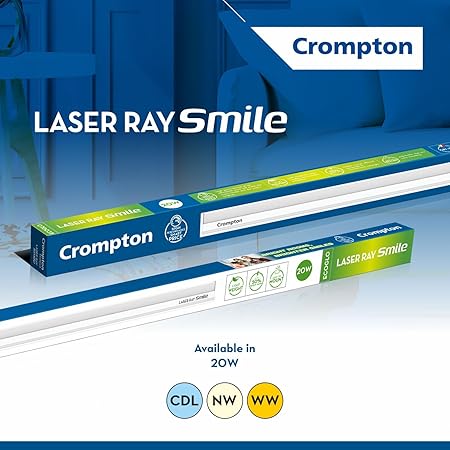
- Features: Instant start, energy-saving, low maintenance.
- Design: Modern, minimalistic look.
- Lifespan: 25,000+ hours.
- Suitable For: All types of interiors.
Tips for Choosing the Right LED Tube Light
- Brightness: Look for lights with high lumens for better illumination.
- Color Temperature: Choose cool white (6500K) for workspaces, warm white (3000K) for cozy settings.
- Energy Efficiency: Check for energy ratings and wattage.
- Lifespan: Opt for lights with a long lifespan to minimize replacements.
- Warranty: Ensure at least 1-2 years of warranty for quality assurance.
Integrated LED Tube Lights vs. Retrofit LED Tubes
When choosing LED tube lights, you’ll encounter two primary options:
- Integrated LED Tube Lights: These all-in-one units feature built-in drivers, eliminating the need for separate ballasts. While easy to install, they may require a full fixture replacement.
- Retrofit LED Tubes: Designed to replace existing fluorescent tubes, these work with the existing fixture, making them a cost-effective option for upgrading older systems.
Understanding the pros and cons of each can help you make the right choice for your needs.
Single-Ended vs. Double-Ended LED Tubes
LED tubes are also categorized based on their connection style:
- Single-Ended Tubes: Powered through one end, these tubes require rewiring the fixture. They are safer and more energy-efficient.
- Double-Ended Tubes: Powered through both ends, these are compatible with existing fluorescent fixtures without rewiring.
While both types have their merits, single-ended tubes are often preferred for new installations due to their enhanced safety and efficiency.
Key Features of LED Tube Lights
Energy Efficiency and Cost Savings
A defining feature of LED tube lights is their remarkable energy efficiency. Unlike traditional fluorescent lights, which lose much of their energy as heat, LED technology efficiently converts almost all electrical energy into visible light. This results in energy savings of up to 50% compared to fluorescent tubes and up to 80% compared to incandescent bulbs.
For instance, replacing a 40-watt fluorescent tube with a 20-watt LED tube can noticeably lower your energy bills. Over time, these savings accumulate, making LED tube lights a smart, cost-effective investment. Additionally, many utility providers offer rebates for upgrading to energy-efficient LED lighting, reducing upfront costs further.
Brightness and Color Temperature Options
LED tube lights are versatile, offering a wide range of brightness levels and color temperatures to suit different spaces. Brightness is measured in lumens and varies depending on the setting:
- Residential spaces: 800–1,200 lumens for a comfortable ambiance
- Offices and classrooms: 3,000–5,000 lumens for optimal productivity
- Industrial areas: 5,000+ lumens for proper illumination
Color temperature, measured in Kelvin (K), determines whether the light feels warm or cool:
- Warm White (2,700–3,000K): Creates a cozy atmosphere, ideal for homes.
- Neutral White (3,500–4,000K): Suitable for offices and general-purpose lighting.
- Cool White (5,000–6,500K): Best for industrial settings, garages, and retail environments.
This flexibility in brightness and color temperature makes LEDs an excellent choice for customizing your lighting environment—something fluorescent tubes can’t match.
Lifespan and Durability
LED tube lights are designed to last, with a typical lifespan exceeding 50,000 hours. This durability means they can function for years, even with daily use, without needing replacement. By comparison:
- Fluorescent tubes last around 15,000 hours.
- Incandescent bulbs burn out after approximately 1,000 hours.
LED tube lights are also highly durable, with resistance to shocks, vibrations, and extreme temperatures. This makes them an excellent choice for industrial and outdoor applications where reliability is crucial.
Compatibility with Various Fixtures
Modern LED tube lights are engineered to fit a wide range of fixtures, including those originally designed for fluorescent tubes. Depending on the type of LED tube (integrated or retrofit), installation may be as simple as plugging it into the existing fixture.
Some LED tubes are ballast-compatible, allowing them to work with existing fluorescent fixtures without rewiring. However, for better performance and reduced maintenance, bypassing the ballast is often recommended, especially for new installations.
Advantages of Using LED Tube Lights
Environmental Benefits
Switching to LED tube lights is a step toward environmental sustainability. Unlike fluorescent tubes, which contain hazardous mercury, LEDs are free of toxic substances, making them safer to use and easier to recycle.
Moreover, the energy savings from LEDs reduce electricity demand, decreasing reliance on fossil fuels and lowering greenhouse gas emissions. As LED lighting becomes more widespread, it has the potential to significantly reduce the global carbon footprint.
Reduced Maintenance Costs
Another key advantage of LED tube lights is their minimal maintenance requirements. Their extended lifespan greatly reduces the need for frequent replacements, saving time and money—particularly in commercial and industrial facilities where maintaining lighting systems can be a challenge.
LEDs also offer consistent performance, with less risk of flickering, dimming, or color fading over time.
Enhanced Lighting Quality
LED tube lights deliver superior lighting quality compared to traditional options. They provide flicker-free, consistent illumination, which reduces eye strain and minimizes the risk of headaches—ideal for environments like offices, schools, and hospitals where people spend long hours under artificial light.
LEDs also have a high Color Rendering Index (CRI), ensuring colors appear vibrant and true-to-life. Whether it’s creating a welcoming home ambiance or showcasing products in a retail store, LED lighting enhances the overall visual appeal.
How to Choose the Right LED Tube Light
Determining the Correct Size
Choosing the right LED tube light starts with determining the size of your fixture. Common sizes include:
- T5: 5/8-inch diameter
- T8: 1-inch diameter
- T12: 1.5-inch diameter
Measure your current fluorescent tube or fixture to ensure compatibility with your new LED tube.
Checking Compatibility with Your Fixture
Before purchasing, verify your fixture’s compatibility with the LED tube. Some tubes work seamlessly with existing ballasts, while others require direct wiring. If your fixture has a ballast, decide whether to use a ballast-compatible tube or bypass the ballast altogether.
Bypassing the ballast improves energy efficiency and eliminates the need for future ballast replacements but may require professional installation for rewiring.
Selecting the Appropriate Color Temperature
The color temperature of an LED tube light plays a vital role in setting the mood and functionality of a space. Consider the following:
- Warm white: Ideal for living rooms and bedrooms to create a cozy feel.
- Neutral white: Great for kitchens and offices, striking a balance between brightness and comfort.
- Cool white: Best for garages and warehouses where maximum visibility is crucial.
Understanding the lighting requirements of each area will help you make an informed choice.
Evaluating Lumens and Wattage
When selecting LED tube lights, focus on lumens (brightness) rather than wattage (power consumption). LEDs are far more efficient than traditional lights, producing more lumens with fewer watts.
For example:
- A 10-watt LED tube can produce the same brightness as a 40-watt fluorescent tube.
Always check the lumen rating to ensure the light meets your specific needs.
